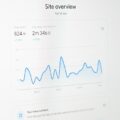Executive Summary
Have you ever wondered why your online advertising campaign isn’t delivering the expected results, despite a high volume of clicks? You might be a victim of click fraud. This is a fraudulent scheme where your ad budgets are intentionally exhausted by bots or malicious competitors. This leads not only to direct financial losses but also to severely skewed analytics, which can cause you to make poor business decisions. In this article, we will take a deep dive into what click fraud is, how it works, its true scale, and, most importantly, how to fight back. We will explore the technical details, examine real-world examples and legal cases, and provide practical advice to protect your business. Ready to find out where your money is really going?
Introduction: The Invisible Enemy of Your Budget
Imagine you’ve just launched an online store. You decide to run an ad campaign on Google Ads, carefully selecting keywords, crafting compelling ad copy, and allocating a budget. In the first few days, the results look promising: hundreds of clicks, a high click-through rate (CTR). But a week or two passes, and there are no sales. You start analyzing the data and notice that visitors from your ads are behaving strangely: they spend only a few seconds on your site, don’t view any products, and leave immediately. What’s going on?
With a high degree of probability, you’ve encountered click fraud. This is a global problem that costs advertisers tens of billions of dollars annually. But the direct financial damage is just the tip of the iceberg. Far more dangerous is how click fraud completely distorts your analytics, forcing you to make incorrect decisions, optimize campaigns based on false data, and ultimately lose faith in the effectiveness of digital advertising.
In this comprehensive guide, we will break down every aspect of this problem: from the technical methods used by fraudsters to the legal avenues and software solutions available for protection.
What is Click Fraud and How Does It Work?
Click fraud is the act of deliberately clicking on a pay-per-click (PPC) ad with the intent to drain an advertiser’s budget, rather than out of a genuine interest in the product or service.
The motives of fraudsters vary:
- Unscrupulous Competition: Competitors click on your ads to exhaust your daily budget, effectively removing your ads from the auction for the rest of the day.
- Publisher Enrichment: Website owners who display ads (e.g., through Google AdSense) may click on the ads themselves or use bots to do so, aiming to increase their own payout from the ad network.
- Organized Crime: Sophisticated criminal organizations build vast networks of websites and bots for large-scale, industrial-level click fraud operations.
The Main Types of Click Fraud
| Type | Description | Tools Used | Detection Difficulty |
| Manual Click Fraud | A person (competitor, disgruntled employee) manually clicks on ads. | Web browser, proxy servers, VPNs | Low (Easy to trace repetitive IP addresses) |
| Automated (Bots) | Specialized programs (bots) mimic the behavior of real users. | Scripts, headless browsers, botnets | High (Bots can simulate mouse movements, change IPs) |
| Click Farms | Large groups of low-paid workers manually click on ads from various devices. | Real devices, proxies | Medium (Behavior seems human, but patterns emerge) |
The Technical Side: How Bots Deceive Modern Systems
Modern click fraud bots are not simple scripts. They are complex programs capable of:
- Simulating User Behavior: They can “move” the mouse cursor across the screen, scroll the page, stay for a random duration, and navigate to internal links.
- Masking Their Identity: Bots use vast pools of IP addresses (via proxy servers or infected devices, known as botnets) to make each click appear as if it’s from a new, unique user.
- Spoofing User-Agents: They can identify themselves as different browsers (Chrome, Firefox, Safari) and operating systems (Windows, macOS, Android).
- Using Headless Browsers: These are real web browsers that operate without a graphical user interface. They fully support JavaScript and cookies, making them nearly indistinguishable from the browsers of real users to analytics systems.
Here is a simple example of a Python script using the Selenium library that could be used to automate clicks (for educational purposes only):
from selenium import webdriver
from selenium.webdriver.common.by import By
from selenium.webdriver.chrome.options import Options
import time
chrome_options = Options()
chrome_options.add_argument("--headless")
chrome_options.add_argument("--disable-gpu")
chrome_options.add_argument("user-agent=Mozilla/5.0 (Windows NT 10.0; Win64; x64) AppleWebKit/537.36 (KHTML, like Gecko) Chrome/91.0.4472.124 Safari/537.36")
driver = webdriver.Chrome(options=chrome_options)
try:
driver.get("https://example-site-with-ads.com")
time.sleep(3)
ad_element = driver.find_element(By.XPATH, '//div[@id="google-ad"]')
ad_element.click()
print("Click completed successfully.") time.sleep(2)
except Exception as e:
print(f"Error: {e}")
finally:
driver.quit()Disclaimer: This code is provided for educational purposes only. Using such scripts for click fraud is illegal and unethical.
Skewed Analytics: The Hidden Threat
Let’s say your advertising budget is $10,000 per month, and your click fraud rate is 20%. That means you’re losing $2,000 every month. It’s painful, but perhaps not fatal for your business. However, the real problem runs much deeper.
How Fraudulent Traffic Destroys Your Data
Fake clicks create “data pollution” across all your analytics platforms (e.g., Google Analytics).
- Bounce Rate Skyrockets: Bots visit your site and leave immediately. You see a 90-100% bounce rate and assume your landing page is bad or your offer is irrelevant, when in fact, that’s not the problem at all.
- Conversion Rate Plummets: You get thousands of clicks but zero leads or sales. You begin to doubt the effectiveness of the channel, pause high-performing keywords, and end up losing real customers.
- Demographic and Geographic Data is Warped: Botnets are distributed globally. Your analytics might show a surge of interest from Vietnam or Brazil, even though your target audience is in California. You might mistakenly allocate marketing budget to irrelevant regions.
- A/B Tests Become Useless: You try to test two different headlines on your landing page. Bots “attack” one version but not the other. As a result, you get completely invalid results and make the wrong decision about which headline performs better.
The Chain Reaction of Bad Decisions
Skewed analytics trigger a vicious cycle:
- Incorrect Performance Evaluation: You see that Campaign “A,” with its high CTR generated by bots, appears more effective than Campaign “B,” which has fewer clicks but from real people.
- Improper Budget Allocation: You reallocate your budget to the “effective” Campaign “A,” essentially feeding more money to fraudsters.
- Abandoning Working Channels: You shut down Campaign “B,” which was bringing you actual customers, because it looked weak compared to the fake numbers from Campaign “A.”
- Loss of Profit and Business Stagnation: Ultimately, you base your entire marketing strategy on flawed data, leading to financial losses and missed opportunities.
Methods for Detecting Click Fraud
The fight against click fraud is a constant cat-and-mouse game. Fraudsters continuously improve their methods, and protection systems evolve to counter them. Fraud can be detected on several levels.
Analyzing Web Server Logs
This is the most “hardcore” but also the most reliable method. Your server logs (e.g., from Nginx or Apache) store raw information about every request: IP address, User-Agent, timestamp, requested page, etc.
What to look for in logs:
- Multiple Clicks from a Single IP: The most basic sign. If dozens of ad clicks come from one IP address in a short period, it’s clear fraud.
- Anomalous User-Agents: Sometimes bots forget to change their default User-Agent, and you might see strings like Python-urllib/3.6 or Selenium WebDriver.
- Clicks at Odd Hours: Sudden traffic spikes at 3 AM (unless your target audience is in a different time zone) should raise suspicion.
- Absence of “Human” Events: Real users generate events like mousemove, scroll, and keydown. Simple bots do not. More advanced bots can simulate these, but often unnaturally (e.g., the cursor moves in a perfectly straight line).
Using Analytics Platforms
Google Analytics and similar tools allow you to build reports that can reveal anomalies.
- Segment by Time of Day: Create a report showing session counts by the hour. Sharp, unnatural peaks can indicate bot activity.
- Analyze by Geography: If you sell pizza in Chicago but 30% of your ad traffic is from India, it’s a major red flag.
- Compare CTRs: If the CTR for a specific keyword or on a particular placement is abnormally high (e.g., 50-70%), it could be a sign of click fraud.
Specialized Anti-Click Fraud Services
Several companies specialize in protecting advertisers from click fraud (e.g., Clickfraud.dev, ClickCease, PPC Protect, ClickGUARD). They generally work as follows:
- A special JavaScript tag is installed on your website.
- This code collects hundreds of data points about each visitor: browser fingerprint, IP address, on-page behavior, device characteristics, etc.
- The collected data is analyzed by machine learning algorithms that identify suspicious activity.
- The IP addresses of fraudsters are automatically added to the exclusion list in your ad campaign (e.g., in Google Ads).
Comparison of Detection Methods:
| Method | Pros | Cons | Best For |
| Log Analysis | Maximum accuracy, full control | Requires technical expertise, time-consuming | Technical specialists, large enterprises |
| Analytics Platforms | Free, accessible to everyone | Not always precise, detects only obvious anomalies | Small and medium-sized businesses |
| Specialized Services | Automation, high accuracy, ease of use | Paid subscription, reliance on a third-party service | Businesses of any size that value their time and budget |
Legal Aspects and Court Precedents
The battle against click fraud isn’t just technical; it’s also legal. Ad networks like Google have their own policies and algorithms to combat invalid traffic and will refund advertisers for some fraudulent clicks.
However, proving click fraud in a court of law is challenging. It requires a substantial body of evidence: server logs, analytics data, and expert testimony.
Example Court Case (Hypothetical, but based on real practices):
- Plaintiff: “Bloom Inc.” (an online flower shop).
- Defendant: “Petal Co.” (a direct competitor).
- The Claim: Bloom Inc. noticed that every time they launched a Google Ads campaign, their entire daily budget was depleted within the first hour. An analysis of their server logs showed that the vast majority of clicks originated from an IP address range belonging to the ISP used by Petal Co.’s office.
- Evidence Presented:
- Google Ads reports showing an abnormally high CTR and rapid budget depletion.
- Web server logs with IP addresses and timestamps.
- An expert witness statement from an IT specialist confirming that the traffic patterns were atypical of human behavior and showed signs of an automated attack.
- Data from the internet service provider confirming the IP addresses were assigned to the defendant.
- Court’s Decision: The court found Petal Co. guilty of unfair competition and ordered them to compensate Bloom Inc. for direct damages (the cost of the fraudulent clicks) as well as lost profits.
This case highlights the importance of collecting and properly documenting all digital evidence.
Real-World Case Study: How an E-commerce Store Saved 30% of its Ad Budget
Company: online retailer of car parts. Problem: Their Google Ads budget was $50,000 per month. The conversion rate was low, and the bounce rate from paid channels was a staggering 85%. The marketing team blamed the landing pages and redesigned them repeatedly, with no improvement.
Step 1: Traffic Audit. The company decided to conduct a deep traffic analysis by installing a specialized click fraud protection service on their website to gather detailed information about every click.
Step 2: Identifying Anomalies. Within the first week, suspicious patterns were identified:
- Approximately 15% of clicks had the same browser fingerprint but came from different IP addresses (a clear sign of a bot using proxies).
- Entire IP subnets were discovered that generated only “bounced” sessions lasting 1-2 seconds.
- A surge in traffic from non-target regions (Southeast Asia) was observed late at night.
Step 3: Blocking the Fraudsters. The service automatically began blocking the identified fraudulent IP addresses and subnets by adding them to the IP exclusion list in their Google Ads account.
Results After One Month:
- The volume of fraudulent traffic decreased by 28%.
- The bounce rate from paid channels dropped from 85% to a healthy 45%.
- CTR decreased slightly (which was expected, as bots had artificially inflated it), but the conversion rate (CR) increased by 40%.
- With the same $50,000 budget, the number of genuine leads increased by 1.5x.
- Budget savings amounted to approximately $15,000, which was reinvested into keywords that were proven to attract real customers.
This case clearly demonstrates that the problem often lies not with the quality of the landing page or campaign settings, but with the quality of the traffic itself.
Mini-FAQ
1. Does Google refund money for click fraud? Yes, Google has automatic filters that discard invalid clicks in real time. You can also submit a request for a refund if you’ve detected suspicious activity yourself. However, they only refund for the fraud their own algorithms can detect, which is by no means 100%.
2. Can I track and block all bots myself? Theoretically, yes, if you have deep technical expertise and a lot of time. But it’s highly inefficient. Fraudsters use thousands of IP addresses, and as you block some, new ones will appear. Automated services do this far more quickly and effectively.
3. Is a high bounce rate always a sign of fraud? Not always. A high bounce rate can also be caused by irrelevant traffic, a slow-loading website, poor usability, or a misleading ad. But when combined with other signs (like extremely short session durations and unusual traffic spikes), fraud is a strong possibility.
4. Do standard Web Application Firewalls (WAFs) protect against click fraud? Partially. A WAF can block known bad bots and network-level attacks, but it is not specialized in analyzing behavioral context within advertising traffic. It cannot distinguish an advanced bot mimicking human behavior from a real user.
5. Can click fraud happen on social media ads (Facebook, Instagram)? Yes, it can. The mechanism is slightly different (payment is often for impressions, not clicks), but impression fraud is also a significant problem. Bots using fake accounts “view” ads to inflate reach metrics and drain impression-based budgets.
Conclusion
Click fraud is a serious and multifaceted threat to any business that relies on paid digital advertising. It’s not just about “losing a few dollars”; it’s a systematic poison that corrupts your marketing strategy from the inside out. To ignore this problem is to build your house on sand, basing critical business decisions on data you cannot trust.
The key to winning this fight is a comprehensive approach:
- Regular Monitoring: Keep a close eye on your analytics reports and look for anomalies.
- Technical Protection: Use specialized services to automatically block fraudulent traffic.
- Legal Awareness: Know your rights and don’t hesitate to contact ad network support or, in severe cases, pursue legal action.
Only by cleaning your traffic of this “junk” can you see the true picture of your advertising performance, make sound decisions, and direct your budget toward attracting real customers, not fake ones.
References and Further Reading
- Clickfraud.dev – A dedicated English-language technical blog focused on preventing click fraud.
- “What is Click Fraud? A Guide For Beginners” – https://clickfraud.dev/what-is-click-fraud
- “How To Detect Click Fraud” – https://clickfraud.dev/how-to-detect-click-fraud
- “Financial Losses and Analytical Distortion: The True Cost of Click Fraud” – https://clickfraud.dev/finansovye-poteri-i-iskazhenie-analitiki-realnaya-czena-sklikivaniya/
- “Why Ad Networks Can’t Fully Combat Ad Fraud on Their Own” – https://clickfraud.dev/pochemu-reklamnye-seti-takie-kak-yandeks-direkt-ili-google-ads-ne-mogut-polnostyu-spravitsya-s-problemoj-froda-sami/
- The Cost of Click Fraud in 2025: What It’s Really Doing to Your Budget and How to Stop It – https://spideraf.com/articles/the-cost-of-click-fraud-in-2025-what-its-really-doing-to-your-budget-and-how-to-stop-ithttps://spideraf.com/articles/the-cost-of-click-fraud-in-2025-what-its-really-doing-to-your-budget-and-how-to-stop-it
- The cost of click fraud: How click fraud drains budgets and ROI in 2025 – https://clickpatrol.com/the-cost-of-click-fraud-how-click-fraud-drains/
- Skewed analytics cost businesses as much as click fraud – https://www.msp-channel.com/news/62838/skewed-analytics-cost-businesses-as-much-as-click-fraud
- What Is Click Fraud? – https://integralads.com/insider/what-is-click-fraud/








